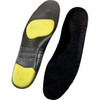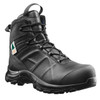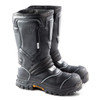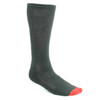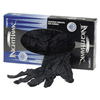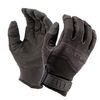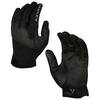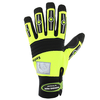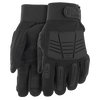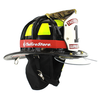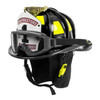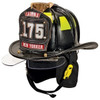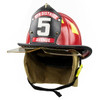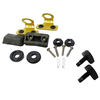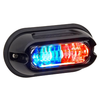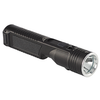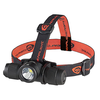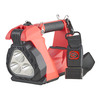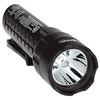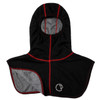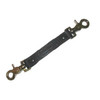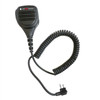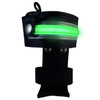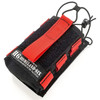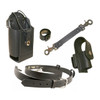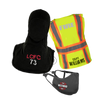SEVERAL TIMES WHEN I NEEDED A THERMAL IMAGING MONOCULAR
Posted by Jerrod Fraley on Aug 8th 2024
As a law enforcement officer who has spent the vast majority of my 17-year career on midnight shift, there have been many times where a thermal imaging monocular would have been extremely helpful. A tool such as the FLIR Breach PTQ136 multi-functional thermal imaging monocular would have allowed for quicker success and resolution ─ and saved me much frustration ─ during these memorable incidents.
The FLIR Breach PTQ136 is capable of spotting heat signatures in total darkness, as well as quickly detecting suspects or evidence even in broad daylight. At a mere 7.4 ounces (210 grams), the monocular can be concealed within a pocket or mounted to a tactical helmet by its mini-rail feature. Its 60 Hz refresh rate gives the FLIR Breach PTQ136 the ability to virtually operate in a real-time manner at both close- and long-range distances.
Hiding in broad daylight
When searching for suspects, the ability to “see” what you’re actually searching for is paramount.
Once, while responding on a SWAT callout to search for and arrest a robbery suspect, we relieved the initial road patrol officers on the perimeter of a residence. As we made our approach to the structure and initiated our tactics, such as announcements, deploying gas and approaching with armored vehicles, the suspect was hiding, in broad daylight, in the field just outside the structure.
Having a helmet-mounted thermal imaging monocular such as the FLIR Breach PTQ136 to search the exterior of the area of the structure as we prepared to make entry would have allowed us to immediately locate the suspect, who was unable to make it past our perimeter in his attempt to flee the scene.
They can run but they can’t hide
Another incident where the FLIR Breach PTQ136 would have been very productive in the location and detention of a suspect was our SWAT Team’s search of a suspect who had shot one of our team members. After many hours of attempting to locate and apprehend the suspect, we used our robot to search the residence where the suspect was supposed to be hiding. When the robot fell short of being successful in locating the suspect, our team had to make entry into the structure.
Once inside, we began methodically searching every room, nook and crevice of the house for the suspect. After an extremely long and detailed search, we eventually found him in the crawl space of the attic, covered in insulation trying to hid from us. The incredible capabilities of the FLIR Breach PTQ136 would have drastically increased our ability to locate the suspect.
Speeding search and rescue
Not only does the FLIR Breach PTQ136 have many tactical applications, the affordability and opportunities it offers to local police agencies for use during daily calls for service is second to none. It is becoming much more frequent for law enforcement officers to respond to endangered and missing persons, as well as EDPs (emotionally disturbed persons) calls for service.
Much of the continuing training that law enforcement personnel are receiving is geared towards elderly persons with dementia, younger juveniles with autism, and EDPs experiencing a personal crisis. When these incidents occur, the FLIR Breach PTQ136 becomes a very useful tool in locating the persons in distress.
Many times in my career I have found myself searching for a known elderly person with dementia who had left their residence on foot in the middle of the night. After long and arduous searches of the local woodlands, wetlands and low-lying ponds, the elderly person was found confused, exhausted and scared.
The FLIR Breach PTQ136 has the capability of detecting the thermal residue of footsteps left behind by people for up to 30-60 seconds. This feature, coupled with a continuous run time of up to 90 minutes, could drastically shorten the search time in locating these endangered/missing persons, allowing for their safe return and the immediate medical attention they would desperately need.
Tracking the past
Another critical incident that comes to mind where the use of the FLIR Breach PTQ136 could have proven incredibly useful was during the search of a suspect who led multiple law enforcement jurisdictions on a long cat-and-mouse chase through several counties. While hot on the trail of the auto thief, the involved agencies were left “in the dark” as the suspect would ditch one stolen vehicle to quickly flee on foot, only to steal another vehicle in his attempts to make his getaway.
A fast-functioning thermal imaging monocular capable of both close and long-distance detection would have proven incredibly helpful in detecting the thermal residue of recent footsteps left behind by the suspect as he ran through open fields and residential yards.
The demands placed on today’s law enforcement officers continues to grow and requires better training and equipment for officers to be most successful in aiding public needs. Between its state-of-the-art capabilities and it cost effective price point, there are few, if any, viable excuses for law enforcement agencies to not use thermal imaging devices such as the FLIR Breach PTQ136.
About the author
Jerrod Fraley is an active-duty patrol officer in Ohio. His assignments have included patrol, detective, regional SWAT team member and training coordinator, as well as being an instructor in firearms, CQB, defensive tactics, mechanical and ballistic breaching, scenario-based training, shoothouse, MILO, TASER and vehicle CQB). In addition to his primary duties as a patrol officer with his respective department, he is also a member of the Ohio Tactical Officer Association Red Team Instructor Cadre, where he teaches basic and advance SWAT and firearms courses across the state.


